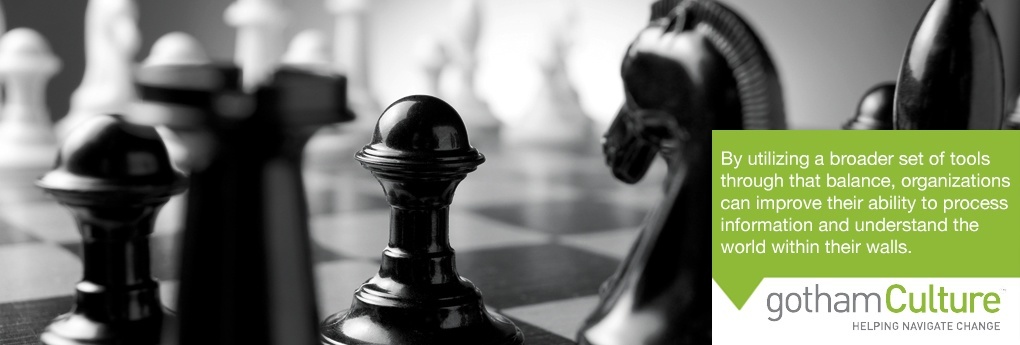For years, businesses have relied on experience, trial and error, and heuristics to make decisions. But, change is in the air. Data analytics has added a new dimension to the decision-making process, giving business leaders access to new, previously unavailable insights.
Unfortunately, there may be a split in the business world regarding its use. While some are skeptical about the move toward analytics, others believe it should be the primary tool for business. In both cases, they tend to miss the bigger picture.
Analytics was never intended to replace intuition, but to supplement it instead.
A Beautiful Combination
The beauty is in the combination. Analytics provides context to the insights that (most) business leaders already possess.
Two recent books help illustrate this point: The Second Machine Age: Work, Progress, and Prosperity in a Time of Brilliant Technologies, by Erik Brynjolfsson and Andrew McAffee, and Average Is Over: Powering America Beyond the Great Stagnation, by Tyler Cowen. Both provide a glimpse of the many ways technology will change the workplace over the course of this century.
Both books use the example of freestyle chess to demonstrate the potential of partnering human intuition with data processing.
For those who are not familiar, freestyle is a type of chess match where humans partner with computers and compete against each other. Not surprisingly, there are many instances where computers have defeated a chess master. And yet, humans cooperating with computers have easily defeated both humans and computers acting alone.
The reason behind this is what’s interesting. Computers use probabilities to determine an optimal move. Humans, on the other hand, rely on their experiences and intuition to identify opportunities and implement different strategies. The computer provides the raw processing power, while the human provides a superior understanding of the game’s mechanics.
The freestyle chess example is a simple illustration, but it demonstrates something more complex for modern organizations seeking new direction: the potential of depolarizing analytics and intuition.
The Analytics Potential
Leveraging analytics, we can aggregate, process, and understand more information than was conceivable even 20 years ago. Analytics Training is a great way to be able to be able to reach your businesses highest potential as it will allow you to have the greatest understanding of how to read your results and invest that knowledge back into the business.
However, it’s important to note that analytics is based on models. In using it as a tool, we need to understand the basic assumptions and limitations of using a model, and use our intuition and experience to fill in the gaps and enhance the analysis process.
Organizational development is a field full of data. In many cases, there is too much information available for one individual to thoroughly digest, analyze, and interpret. As in freestyle chess, analytics uncovers the trends, but the human in the mix determines which trends are most relevant. That’s how organizations come to understand which trends are worth further investigation.
By utilizing a broader set of tools through that balance, organizations can improve their ability to process information and understand the world within their walls. It all comes down to balance. Rather than separating the qualitative from quantitative process from one another, organizational development should be informed by both data and intuition in order to drive the desired outcomes.

